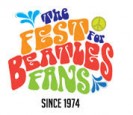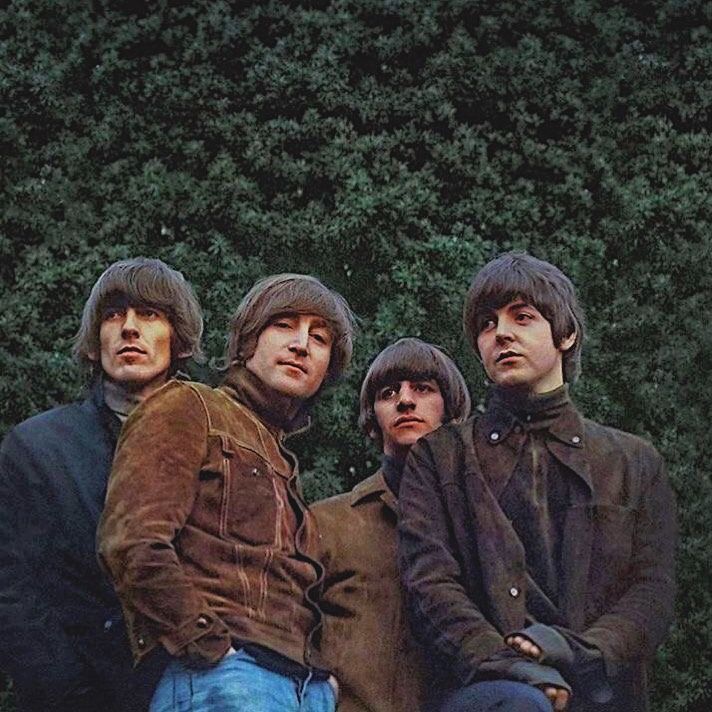For the next 12 months, the Fest for Beatles Fans blog will each month move track-by-track through the magical LP that was Rubber Soul. Many people consider Revolver to be The Beatles’ “transitional” LP. Others, including myself, think the pivot point in The Beatles’ career was Rubber Soul. John Lennon, in fact, stated that Rubber Soul was “the album on which The Beatles began dominating the recording process.” (Hertsgaard, 168-169) In almost every way, the late 1965 LP was a bold directional change. Let me explain…
They had more than a month to devote to the new LP — a luxury never before afforded to the lads. Please Please Me — comprised of a few original songs and a plethora of numbers from their old Cavern Club show — had been honed on the Helen Shapiro Tour bus and recorded in a single day. The songs for A Hard Day’s Night had been written in between concerts in a Georges Cinq hotel room in Paris, January 1964. And the country-and-western themed tunes for Beatles for Sale had been hastily churned out prior to the 1964 North American Tour, refined in “catch-as-catch-can” moments on tour, and recorded in a handful of days immediately following the tour. Never had the boys ever been given a full month dedicated solely to the planning, writing, polishing, and recording of a new LP.
But the results of such an extravagance were well worth the wait…and the devotion. Rubber Soul was, according to New York Times and Rolling Stone journalist/author Mark Hertsgaard in A Day in the Life: The Music and Artistry of The Beatles, “…the finest album to date, and some say, [The Beatles’] finest album ever. With Rubber Soul, The Beatles offered, for the first time, an album with virtually no weak spots. It was made up of songs that were immediately captivating and enduring.” (p. 167)
The motifs of the late autumn 1965 LP were significantly more mature than the subject matter found on earlier albums. The popular themes of “she loves you,” “I love you,” and “you love me” were superseded by complex, mature, adult themes: struggling relationships (“Think for Yourself,” “What Goes On,” “Girl,” and “I’m Looking Through You”), casual dalliances (“Drive My Car” and “If I Needed Someone”), adultery and female-scorned liaisons (“Norwegian Wood” and “Drive My Car”), deep-seated jealousy and anger (“Run for Your Life”), and lingering self-doubt (“Nowhere Man”). But the album’s catalog was also graced with emotional songs of friendship and love, such as “In My Life,” “Wait,” and “Michelle.” And there is even a track, “The Word,” which celebrates agape love, that universal bond that could ultimately bring us all together.
Not only are the themes of Rubber Soul more developed and considered, but the music itself is also enriched with variety. The enchanting harmonium work in “The Word,” “We Can Work It Out,” and more subtly, in “If I Needed Someone” is sublime, as is the harpsichord-sounding piano in “In My Life.” Harrison’s sitar work (once pared down a bit from the overpowering first takes) makes “Norwegian Wood” soar. And McCartney’s fuzz bass in “Think for Yourself” enhances the power of Harrison’s lyrics. Wonderfully, the Beatles signature techniques, such as handclaps and three-part harmony, are still present and still viable as the boys retain their unique identity. Indeed, in Rubber Soul, nothing is abandoned but much is added.
Given the opportunity to focus entirely on their work, the late 1965 Beatles raised an already-elevated bar. Their lyrics became edgier, allowing the listener to investigate myriad levels of meaning. Their story songs offered multiple conclusions. And as they embraced global influences (such as The Byrds in “If I Needed Someone,” The Yardbirds in “Norwegian Wood,” and Dylan on many of the new tracks), the boys rose to equal their peers and surpass them.
Noted Beatles music experts have widely varying theories about why Rubber Soul affected (and still continues to affect) listeners so powerfully. Some point to the music; others, to the unique Scouse wit, and still others, to poetic lyrics. And all of this mattered. But one can’t ignore the importance of the record’s inherent vulnerability as a tremendous point of connectivity.
In almost every song on the Parlophone LP, one or more of The Beatles is admitting weakness. And in the words of St. Paul, “…when I am weak, I am strong.” John, Paul, George, and Ringo find a universal connection to their fans in simply confessing that they — just like the members of their audience — often feel isolated, lonely, afraid, frustrated, angry, and unfulfilled. The Fab Four are no longer “fab.” In Rubber Soul, they become human. They emerge “a bit like you and me.”
In his classic work, Tell Me Why, Tim Riley states, “Rubber Soul intensified the bond with the audience…it drew [The Beatles] closer to their listeners, as the frenzy of their tours continued to isolate them.” (p. 153) By freely admitting their own flaws, failures, and fears, The Beatles bridged the gap that the stadium fans were always trying to hurdle. The band dismantled that barrier. In Rubber Soul, the fans and The Beatles find an avenue to “come together.”
I can’t wait to explore this album with you as over the next twelve months we walk, track-by-track though Rubber Soul. Up first, we’ll take a fresh look at “Drive My Car” with noted author, Dr. Kenneth Womack (author of the best-selling new work, John Lennon 1980) about this clever opening track. Join us in just a few days, and our Rubber Soul adventure will begin!










